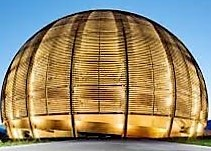Speaker
Description
Low Mass X-ray Binaries that transiently accrete matter onto their neutron stars are excellent laboratories for studying dense matter physics. These systems go in and out of the quiescence phase over observational timescales of decades. Monitoring the surface temperatures of neutron stars in this phase reveals a great deal of information about their structure and composition. However, to infer these properties, it is necessary to have a complete understanding of different nuclear reactions that heat or cool the crust. Urca cooling is one such source of neutrino cooling in the crust that strongly depends on the ground-state to ground-state $\beta$-decay transition strengths. $A = 33$ mass chain, and specifically the $^{33}$Mg - $^{33}$Al transition is the strongest Urca cooling agent for crusts composed of X-ray burst ashes. This relies partly on the strong ground state branch measured in high resolution $\beta$-delayed $\gamma$-spectroscopy of $^{33}$Mg. However, recent measurements of a negative parity ground state in $^{33}$Mg makes this a first forbidden decay and the strong transition strength is questioned in the literature, citing Pandemonium effect as a possible reason. We try to resolve this anomaly using Total Absorption Spectroscopy that is mostly free of this Pandemonium effect. I will present the $\beta$-decay of $^{33}$Mg experiment performed at the National Superconducting Cyclotron Laboratory (NSCL) with NERO/BCS/SuN detector system and discuss results from ongoing analysis. This measurement will also provide more information about the nuclear structure effects near the $N = 20$ island of inversion and how they manifest in astrophysical systems.




